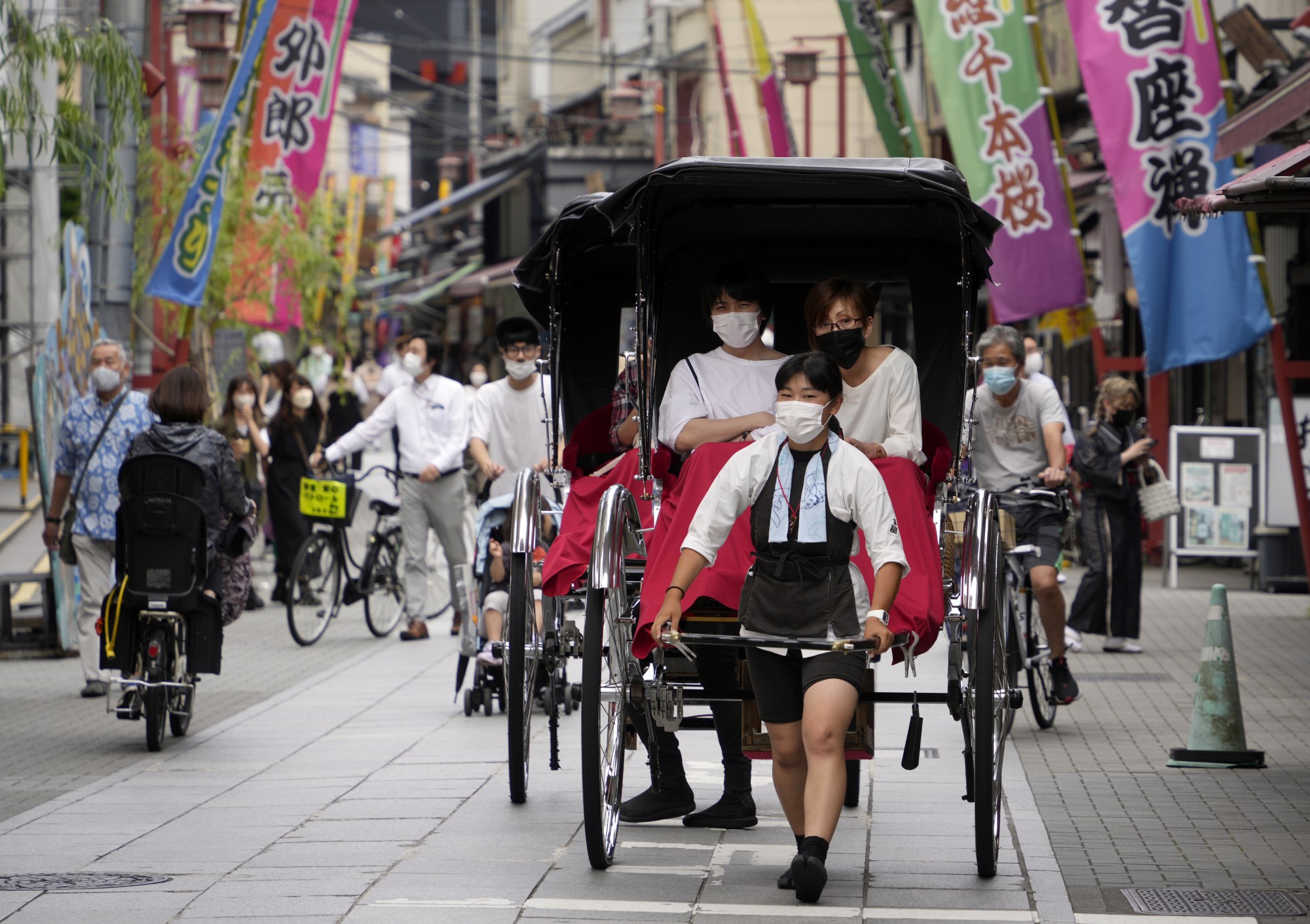
Coronavirus: new cases top 45,000 in Japan, nearly double last week’s figure
- Fears over the onset of a seventh wave spread – fuelled by a new Omicron subvariant – higher numbers were reported in all 47 prefectures
- The BA.5 strain is believed to have the ability to slip through the immunity obtained from vaccines and infections so far
Newly confirmed Covid-19 cases nearly doubled from a week earlier to more than 45,000 in Japan on Wednesday, exceeding the 40,000 mark for the first time since May 18 as the nation’s coronavirus infections continue to rebound.
Fears over the onset of a seventh wave spread, more than likely fuelled by a new Omicron subvariant, as higher numbers were reported in all of the 47 prefectures, with cases more than doubling in Tokyo, and Osaka and Kanagawa prefectures compared with the week before.
In Tokyo, 8,341 new cases were recorded, compared with 3,803 on the same day last week, according to the metropolitan government. The capital confirmed 5,302 new cases on Tuesday.
The seven-day rolling average of new cases in Tokyo stood at 4,426.6 per day, up 86.8 per cent from the previous week.
Osaka and Kanagawa reported 4,621 and 3,038 new daily cases, respectively, helping take the nationwide tally of new Covid-19 infections to 45,821 on Wednesday.
In Fukuoka Prefecture in southwestern Japan, 2,366 new cases were confirmed, prompting the prefectural government to issue an alert and ask residents to take antivirus measures.
Infections had been on the decline across the nation since mid-May but began to increase in late June. Newly confirmed cases exceeded 30,000 on Tuesday, with the BA.5 subvariant comprising an increasing share of new daily cases.
The BA.5 strain is believed to have the ability to slip through the immunity obtained from vaccines and infections so far, more than likely enabling a faster spread than the BA.1 and BA.2 subvariants that had previously spread in Japan.
Japan hopes popular anti-groping app will deter return of train molesters
The National Institute of Infectious Diseases projects BA.5 to become mainstream during the week of July 4 to 10 with most patients infected with it.
At a news conference on Wednesday, Osaka Governor Hirofumi Yoshimura expressed concern over the surge in the Western Japan prefecture, warning it could develop into a “wave similar to the sixth one,” which struck Japan earlier this year.
Daily new cases surpassed 100,000 a day nationally during a peak period in the previous surge.
Following the upwards trend of the virus, the health ministry on Tuesday asked prefectural governments in writing to examine and strengthen medical infrastructure under their jurisdiction, including preparing enough bed space for older patients.

The ministry called attention to the need for hospitals to find a good balance between Covid-19 treatment and emergency medical care given an increase in the number of heatstroke patients brought in for emergency care.
The rebound in virus cases can also lead to a rapid increase in the number of patients staying at home while waiting to recover.
The government of Prime Minister Fumio Kishida was planning to roll out a nationwide travel subsidy programme sometime during the first half of July but now plans to postpone it, a government source said Wednesday.
The government plans to carefully watch the infection situation and make a decision next week after Sunday’s House of Councillors election, the source said.
The new subsidy campaign would be a nationwide version of subsidy programmes currently implemented at the prefectural level to encourage local travel among residents.


